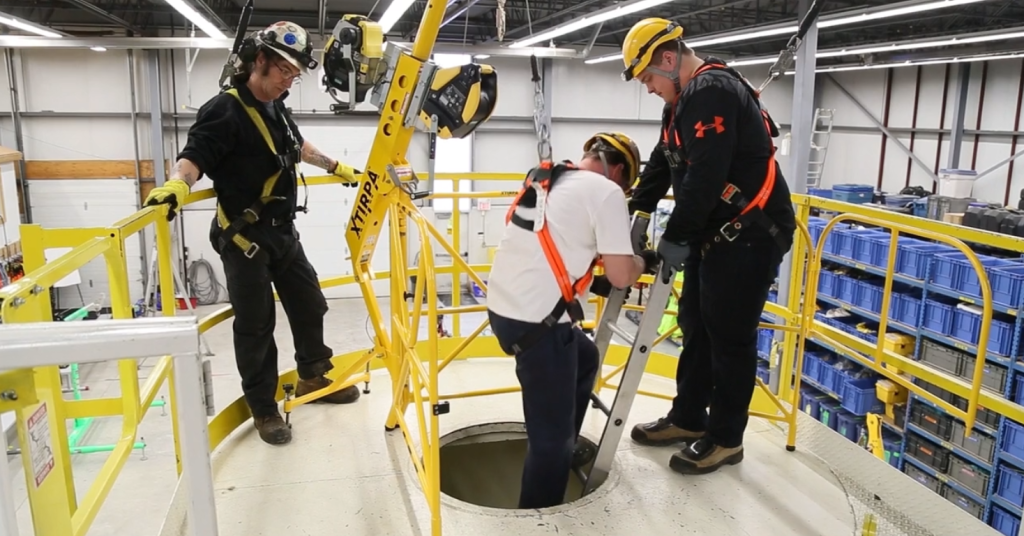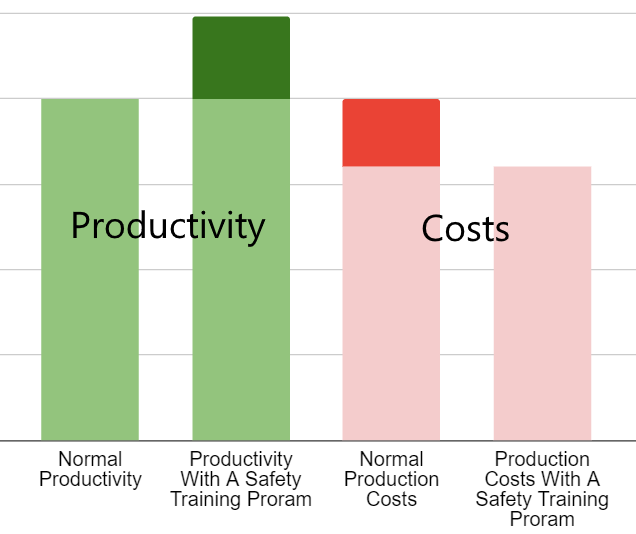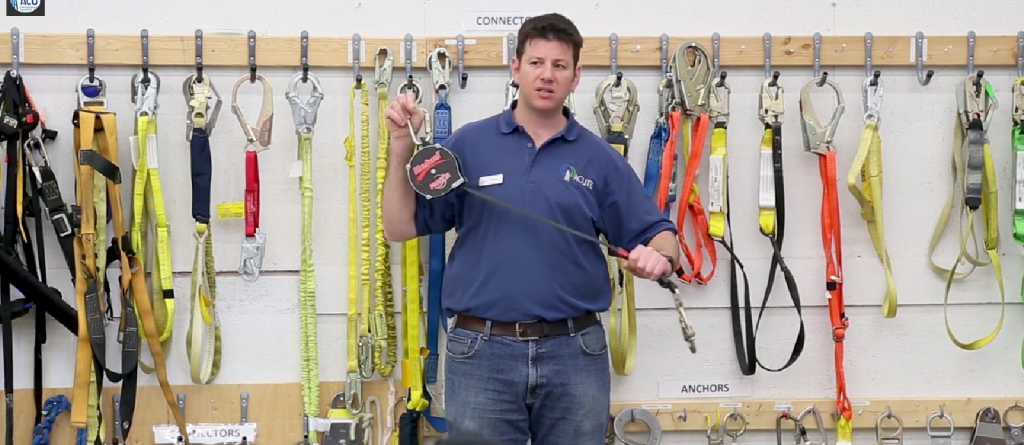Workplace safety in Ontario is governed by solid legislation and backed by years of experience – but myths persist. These misconceptions can lull employers into a false sense of security, undermining compliance and exposing employees to avoidable risks. Here’s a breakdown of common Ontario safety myths, the facts that refute them, and what you need to do to stay compliant.
Click on the following sections to learn more.
- Myth 1: “Only construction or manufacturing sites need safety training.”
- Myth 2: “Safety is just common sense.”
- Myth 3: “Accidents are just unavoidable.”
- Myth 4: “Safety is too expensive and time-consuming.”
- Myth 5: “Minor incidents don’t need to be reported.”
- Myth 6: “Workers can’t refuse work—it’s not unsafe.”
- Myth 7: “Training only needed once.”
For more on workplace safety and emergency preparedness, contact us.
Myth 1: “Only construction or manufacturing sites need safety training.”
Reality
The Occupational Health and Safety Act (OHSA) applies to virtually all workplaces across Ontario—offices, retail, warehouses, personal services—regardless of size or industry.
That means responsibilities for hazard identification, training, safety policies, and reporting accidents apply even in “low-risk” environments.
Risk
Neglecting training because a site “seems safe” leads to missed hazards, lack of preparedness, and potential ministry orders or fines, as the 7,000+ orders for missed “administrative” and training violations by Workplace Safety & Prevention Services demonstrates.
What to Do
Ensure basic health and safety awareness training (Reg 297/13) is completed by all staff and supervisors before starting work, plus role-specific training where hazards exist (e.g., ergonomics, chemicals, WHMIS).
Myth 2: “Safety is just common sense.”

Reality
While some elements may seem obvious, “common sense” isn’t a substitute for structured programs, written policies, and formalized training. Laws require written policy, hazard assessments, committees, and documented training. You must post a copy of the Occupational Health and Safety Act in your workplace or in a readily accessible electronic format.
Risk
Relying on informal understandings leads to inconsistent practices, forgotten tasks, unaddressed hazards—and it’s a sure path to legal trouble if an incident occurs or an inspector audits the workplace.
What to Do
Publish a written health & safety policy (reviewed annually), implement a hazard prevention program, conduct regular inspections, and keep training and inspection records.
Myth 3: “Accidents are just unavoidable.”

Reality
Though not all risks vanish, many common workplace injuries—ergonomic strains, slip-and-falls, cuts—are entirely preventable with hazard identification, training, PPE, and continuous improvement.
Risk
Seeing accidents as inevitable discourages investment in safety, leads to underreporting, and allows minor incidents to become serious problems.
What to Do
Break the “unavoidable” mindset by tracking near-misses, analyzing causes, and implementing corrective actions—turn data into prevention.
Myth 4: “Safety is too expensive and time-consuming.”

Reality
Spending on safety is an investment. Studies show every $1 spent on prevention saves $2–3 in direct and indirect costs.
Meanwhile, WSPS issued 6,600+ orders for failure to deliver basic training alone, with each order bringing costs, lost hours, and potential penalties.
Risk
Skimping on training or maintenance leads to serious incidents, WSIB/WSPS penalties, reputation damage, and legal exposure—including potential criminal liability under Bill C‑45.
What to Do
Budget for safety training—many free or subsidized options are available via the Ministry of Labour, Immigration, Training and Skills Development and WSPS. Factor in equipment maintenance, inspections, and safety officer training.
Myth 5: “Minor incidents don’t need to be reported.”
Reality
Every near-miss or minor incident is a warning sign. Ignoring them means locking down on hidden hazards and missing chances to improve.
Risk
Unreported minor events can escalate into major accidents. Also, under-reporting grabs inspectors’ attention and can result in legal consequences.
What to Do
Promote a no-blame reporting culture, document every minor event, analyze trends, and take corrective action before things escalate.
Myth 6: “Workers can’t refuse work – it’s not unsafe.”

Reality
Under OHSA, every employee has the legal right to refuse unsafe work when they have a reasonable belief of danger.
Managers must investigate promptly and cannot retaliate.
Risk
Suppressing refusals or ignoring concerns violates OHSA, escalates worker frustration, and can trigger orders or charges.
What to Do
Train staff and supervisors on the Right to Know, Participate, and Refuse, ensure clear refusal procedures, and respond swiftly to concerns.
Myth 7: “Training only needed once.”

Reality
Basic awareness training does not expire, but that’s just the baseline.
Employers must provide ongoing, hazard-specific training for tasks like working at heights, chemicals, and violence/harassment (among others). They must also retrain when hazards or procedures change.
Risk
One-off training leaves staff unprepared for new risks, unknown standards, and evolving legislative requirements. WSPS issued thousands of orders for failure to update training.
What to Do
Maintain documented training records, schedule refreshers, and update training immediately whenever job duties, hazards, or OHSA/WHMIS regulations change.
Final Takeaway: Challenge Your Safety Assumptions
Ontario’s health and safety system isn’t optional or sector-specific – it’s a shared responsibility that applies across industries, companies, and job types. Here’s how employers can stay ahead:
-
Audit your internal assumptions and safety practices.
-
Train every worker and supervisor—general and hazard-specific.
-
Document policies, inspections, incidents, training, and committee meetings.
-
Foster a safety culture that encourages reporting and supports refusals.
-
Review and refresh regularly to align with current standards.
By debunking these myths and committing to continual improvement, you’ll reduce risks, strengthen compliance, and empower your entire team. It’s not just good for safety – it’s good for business.
Take our Ultimate Workplace Safety Challenge to cover the most critical areas of workplace safety, from fire response to working at heights. Use it as a quiz, a toolbox talk activity, or even a team-building exercise.
Don’t Buy Into These Ontario Safety Myths
Don’t let outdated beliefs put your business and team at risk. If you’re unsure whether your current health and safety practices meet Ontario regulations—or want help delivering effective, certified training – contact us today.
Not sure where to start? ACUTE can help.
We provide comprehensive health and safety training, on-site safety services, and consulting designed to prepare your team for the unexpected.
Why Choose ACUTE?
-
Extensive Experience: With over 100 years of combined on-site experience, our team delivers more than just theory—we bring real-world insight into every training session.
-
First-Rate Trainers: Our instructors are experienced professionals who make safety training hands-on, engaging, and practical.
-
Tailored Training Solutions: Every workplace is different. We customize our training to align with your specific industry, policies, and emergency procedures.
-
Convenient Location: Located in Waterloo, we proudly serve all of Ontario and have supported clients coast to coast.
-
World-Class Facility: Our advanced training centre is among the best in Canada and well worth the visit for organizations serious about safety
Contact ACUTE today to schedule a consultation or book training for your team.
What Our Customers Are Saying…
Acute is recognized and respected as a people organization and they have been doing it right for a long time.
Acute has been a staple in supporting my companies over the years and have always delivered quality amd dependable service. Training programs are top shelf and a great facility for practical application. couldn’t recomend them more. keep up the great work folks.
We were referred to ACUTE on behalf of our employer for an n95 mask fitting – the staff here are professional, personable, and informative.
I’d come back here for any safety-related training in a heartbeat.

